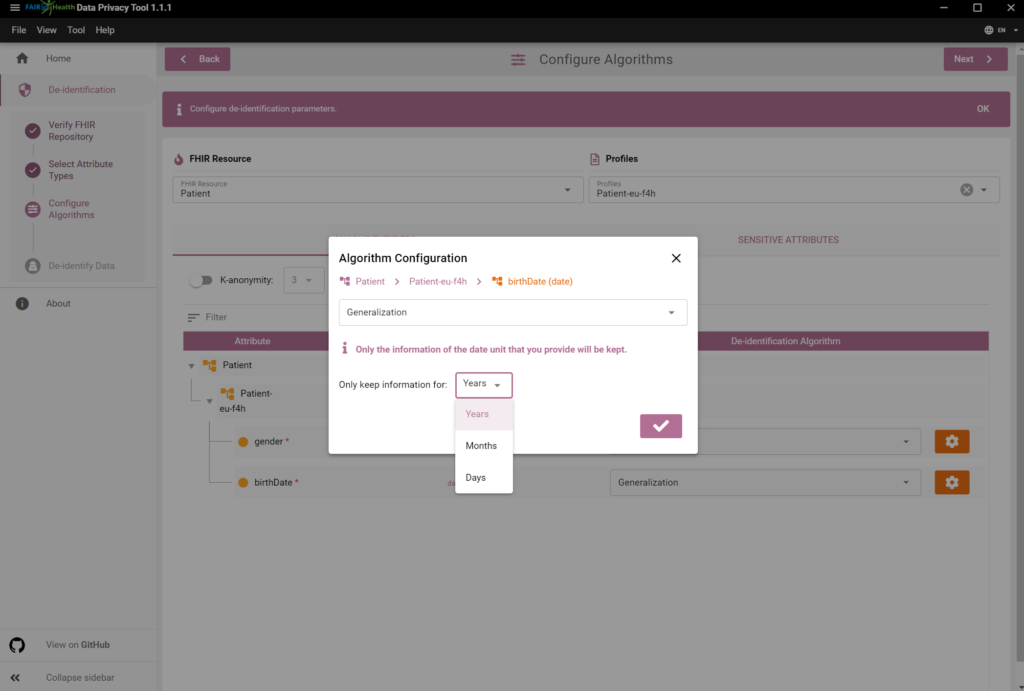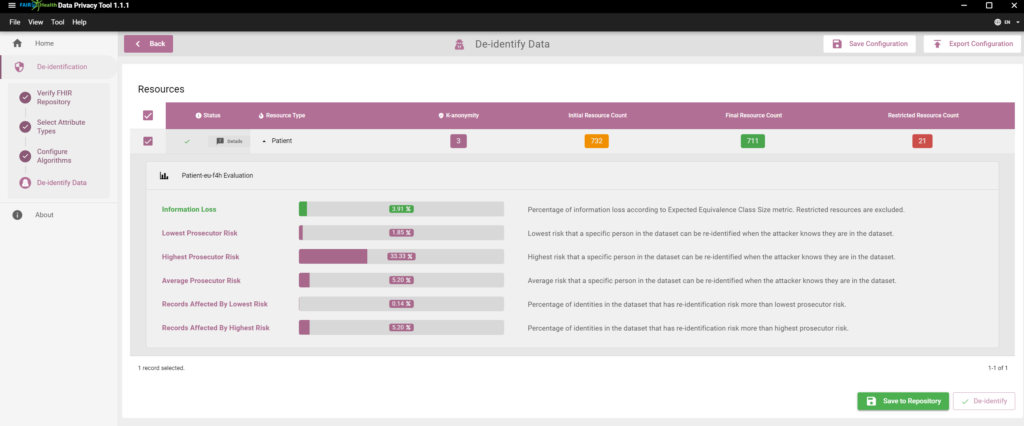Data Privacy Tool
This is a standalone desktop application which works on HL7 FHIR resources so that the users can apply de-identification and pseudonymization configurations directly on the FHIR resources as well as other security and privacy measures. Previously, I presented a rough architecture of the Data Privacy Tool in this scientific journal paper.
The tool communicates with a valid FHIR endpoint and then helps the users de-identify the FHIR resources through algorithm suggestions and with validation according to the rules exposed by the FHIR endpoint. The tool recommends valid de-identification algorithms (e.g. redaction, generalization, pseudonymization) for the corrsponding FHIR elements (e.g. gender, birth date, conditions). Moreover, the tool can automatically satisfy the level of k-anonymity if the “k” is provided by the user. A video tutorial of the tool can be found here. The source code is open and can be found on GitHub together with installable releases.


I am the lead software architect of the Data Privacy Tool. While the heavy burden of the coding was on the shoulders of my junior colleagues, I did lead the development while always keeping an eye on the source code by handling each and every pull request. We developed it with Electron framework which combines the Chromium rendering engine and the NodeJS runtime. We implemented with TypeScript under VueJS and used the Quasar framework for the graphical components. The full tech stack can be found on stackshare.
